We may receive a commission when you use our affiliate links. However, this does not impact our recommendations.

The June issue of Popular Woodworking Magazine will include a reference guide to four types of hinges that are relatively uncommon and one, the architectural butt, in an uncommon application.
The second article in my two-part series about hinges for Popular Woodworking Magazine was conceived as “5 Fussy Hinges.”
Tricky, fussy…choose your adjective. I prefer “less commonly used,” with the disclaimer that one woodworker’s “less common” may be another’s “everyday”; Brendan Gaffney may be able to install knife hinges in his sleep, and I used non-swaged brass butts on an almost daily basis for years, but many woodworkers have never used either of these types.
Megan Fitzpatrick’s intention, when she assigned the series, was to publish a couple of reference articles that would be useful to a wide readership. Not everyone wants to build a Shaker candle stand…or a Dutch tool chest…or an Arts & Crafts sideboard; some readers want information on materials or techniques. This kind of reference article provides a valuable place to start when you’re new (or even not new) to making cabinets or boxes and wondering which hinge might work best on a given project.
We decided on the following hinges:
- Bi-fold European hinges
- Rat tail hinges

Rat tail hinges are simple and decorative.
- Knife hinges
- 95-degree stop hinges
- Soss hinges
But when the article appears, Soss hinges won’t be part of it. Here’s why.
***
I bought all the hinges, along with templates for the knife and Soss hinges (and a special router cutter for the Soss template), weeks in advance. When you write for magazines and also make your living building commissions, it’s essential to have everything on hand for that moment when you’re finally able to dive in.
Writing reference articles about hinges is different from using them in your own work. Writing about a general topic for a broad readership doesn’t give you the luxury of choosing what’s most familiar to you personally. On top of this, most hinges are available in several different forms, each designed for particular applications.
As a conscientious writer, I didn’t just want to write about the Soss barrel hinge with which I’m familiar; I wanted to consider what might be most useful to readers. So I called the company and asked which model is most commonly used by cabinetmakers. “The 204,” said the helpful representative. So I bought a pair, along with the template to install them using a router. I also watched an installation video linked to the Soss site so I’d be better prepared.

Soss 204 hinge
The Soss was on the docket for day two of that week. When I took the router template out of its package I realized I would need a template guide, or bushing. I ordered it immediately, requesting two-day delivery so I would have it in plenty of time, then switched to the European bi-fold hinge.
When the bushing arrived, I put it on my router base and inserted the cutter I’d ordered specifically for the installation, as recommended by the Soss website. It was then that I realized the cutter had a 3/8″ shank. Nice curveball. As a professional woodworker who uses routers on an almost daily basis for a range of applications, I have seven routers on hand…none of which has a 3/8″ collet. I have never needed to accommodate a 3/8″ shank; until now, every cutter in my extensive collection has had a 1/4″ or 1/2″ shank.
So I moved to Plan B. The hinge had come with a paper template. I decided to forgo the router installation and use ye olde Forstner bit and chisel (my preferred method, anyway). I dutifully got out my brad awl, chucked a 1/2″ bit in my drill and set to work. Making the slot, which involves two depths (the deeper part for the mechanism, the shallower part for the plate), was a piece of cake. But when I tried to insert the hinge, it wouldn’t fit. I tried a few times, checked the paper template…and still no joy. When I measured the slot and the template with a high-quality steel rule, I found it was about 1/16″ too short.
At this point, I was starting to feel like there was a dark cloud over my head, at least when it came to the Soss 204. I considered my options, mindful of the impending deadline. Surely I could just make my own template, based on the hinge’s dimensions? But how precise would that be? Soss hinges are entirely about precision; in addition to being invisible when a door is closed, they’re strong, smooth and silent. That’s exactly why Megan and I thought we should include them in the article. But really, if you’re going to supply a template with a piece of hardware, shouldn’t it be the right size?
I needed to make progress on the article, so I moved on to the offset-pivot knife hinges. They went in like a dream. In the meantime, I thought I could just use a different cutter that I already had on hand to install the Soss 204.
That was what I attempted to do the next day, but the slot I produced was not the right size. I also realized at that point that a fixed-base router was less than ideal for this precision operation, but the two Porter Cable routers I have that are compatible with the template guide bushing both have fixed bases. (Each has a dedicated purpose for which a fixed base is ideal: I keep one in the router table, the other set up to cut tails with my Keller dovetail jig.) At this point I called the company back, only to learn that the person I needed to talk with (not only about the router template but regarding the paper template as well) was at a trade show. He would be back the following day. So I moved on to rat tail hinges.
To spare you the full saga, the representative who spoke to me was surprised to learn that the paper template didn’t fit the hinge. He said he was glad I brought it up, because the paper template is intended (and needs) to be accurate. Not everyone uses electricity, so a brace-and-bit plus chisel option would be good to have. I called Brendan, who was managing editor of the magazine at the time, and explained the ins and outs of my attempt to use the 204. He agreed that we should choose an alternative for the fifth hinge. That’s why the article will cover architectural butts in atypical applications.
***
I refuse to let the Soss 204 get the better of me. It’s a beautifully engineered hinge that I know I will use in some clever applications, once I’ve managed to add it to my repertoire. I have an adapter for 3/8″ shank router cutters on order, along with a Porter Cable plunge router that will allow me to leave my fixed-base routers in their dedicated set-ups. Keep your eyes open for a post here on Soss 204 hinges in the next few weeks.
– Nancy Hiller
Here are some supplies and tools we find essential in our everyday work around the shop. We may receive a commission from sales referred by our links; however, we have carefully selected these products for their usefulness and quality.






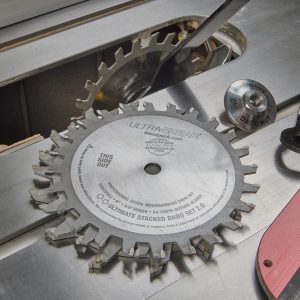
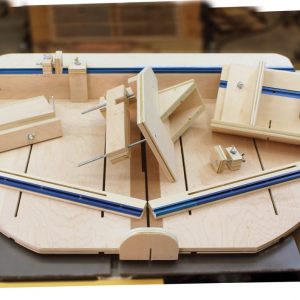

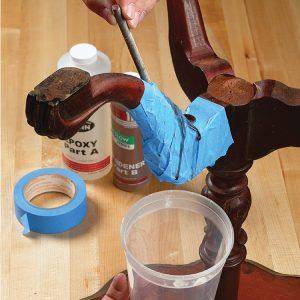

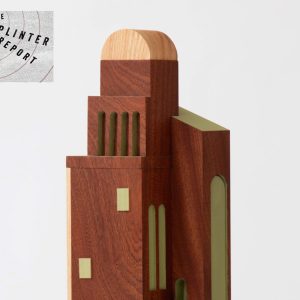

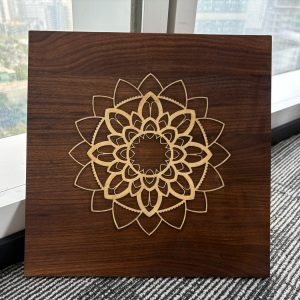




Looking at your photo, it is easy to see that the hinge is not centered in the style. Why is that? I can see it has the same dimensions to the inside face, so when closed it is flush.
I used a smaller size version of these hinges on a recent project and managed to cut the holes with a drill guide and brad point bit, but it was fussy to get the depth right, and it was annoying to install and remove them for test fits because the fit was very snug. The hinges enabled me to make a door that folds in half with the hinge invisible inside the door when it is closed so the grain on the door isn’t interrupted by a hinge.
You could say your were “lost in the soss”.
Elegant photograph.
NICE
I may have a shortcut for you. Marc Spagnuolo (The Woodwhisperer) has video he did several years ago on making a jig to install the Soss hinges. This is on his free site. I used his technique several times to install these hinges with great results. If I remember right, the jig Soss offers is a little pricey. Here is the link to his video: https://www.thewoodwhisperer.com/videos/63-gadget-station-pt-6/